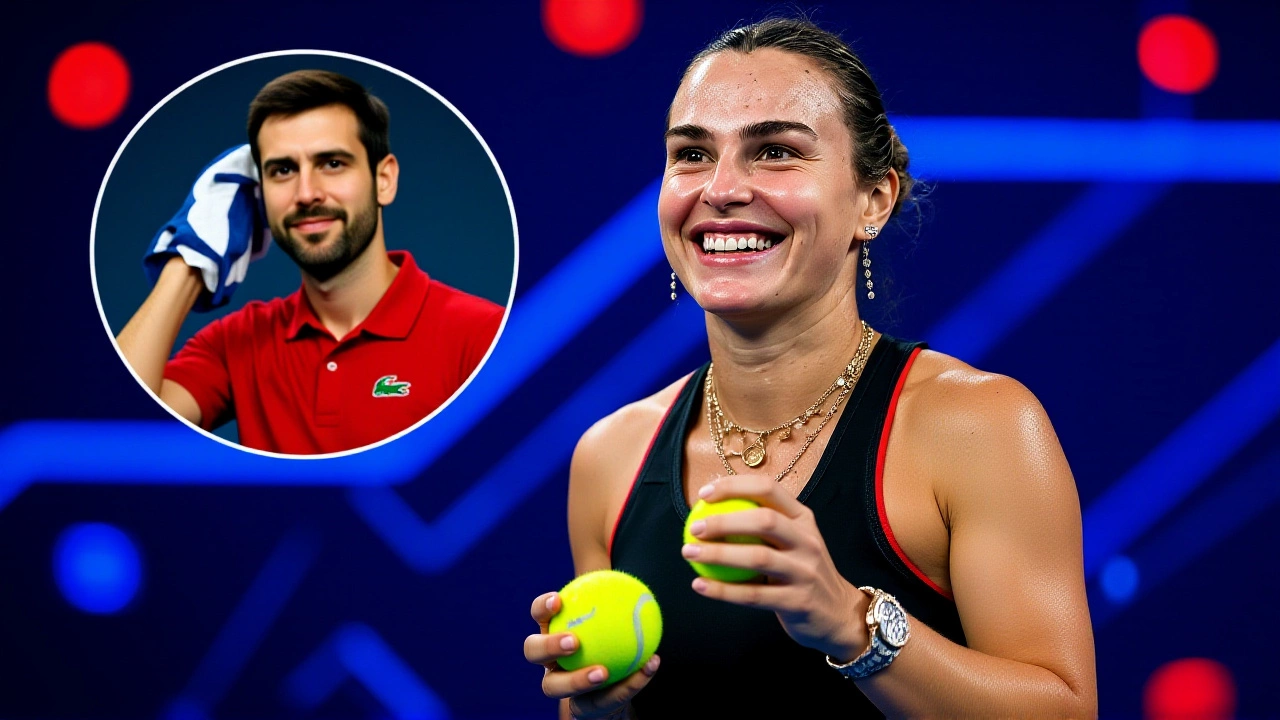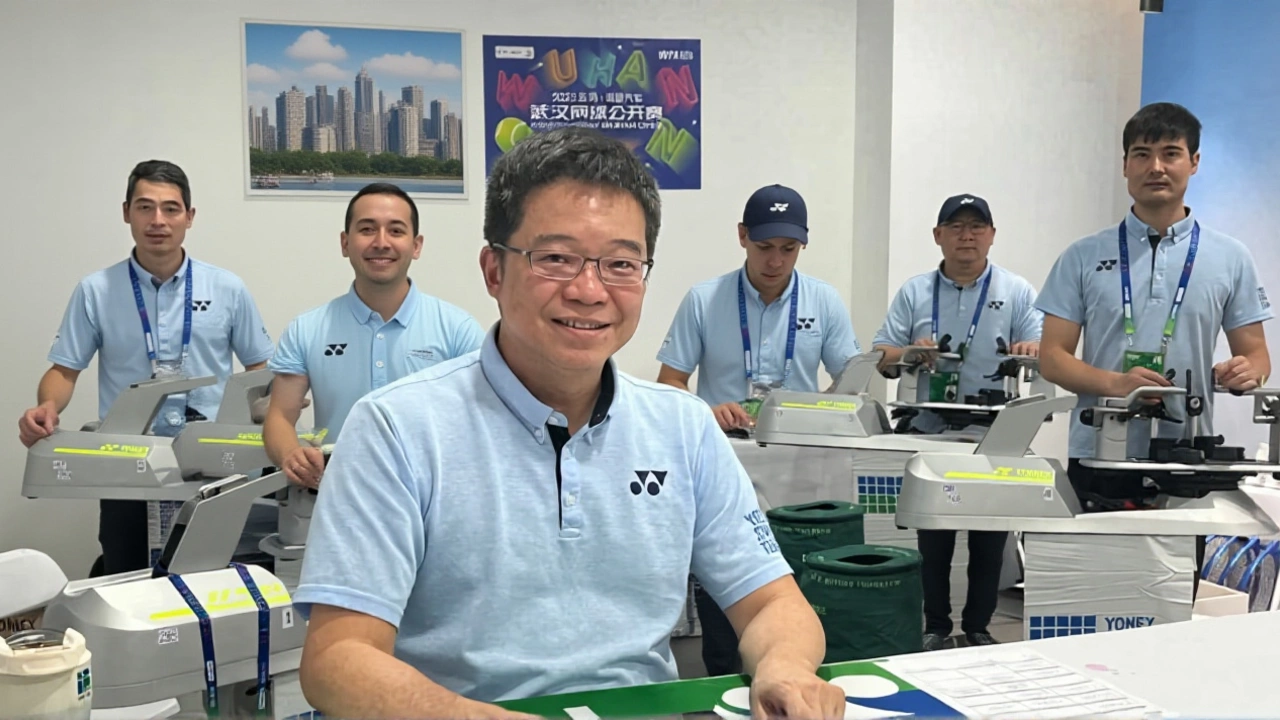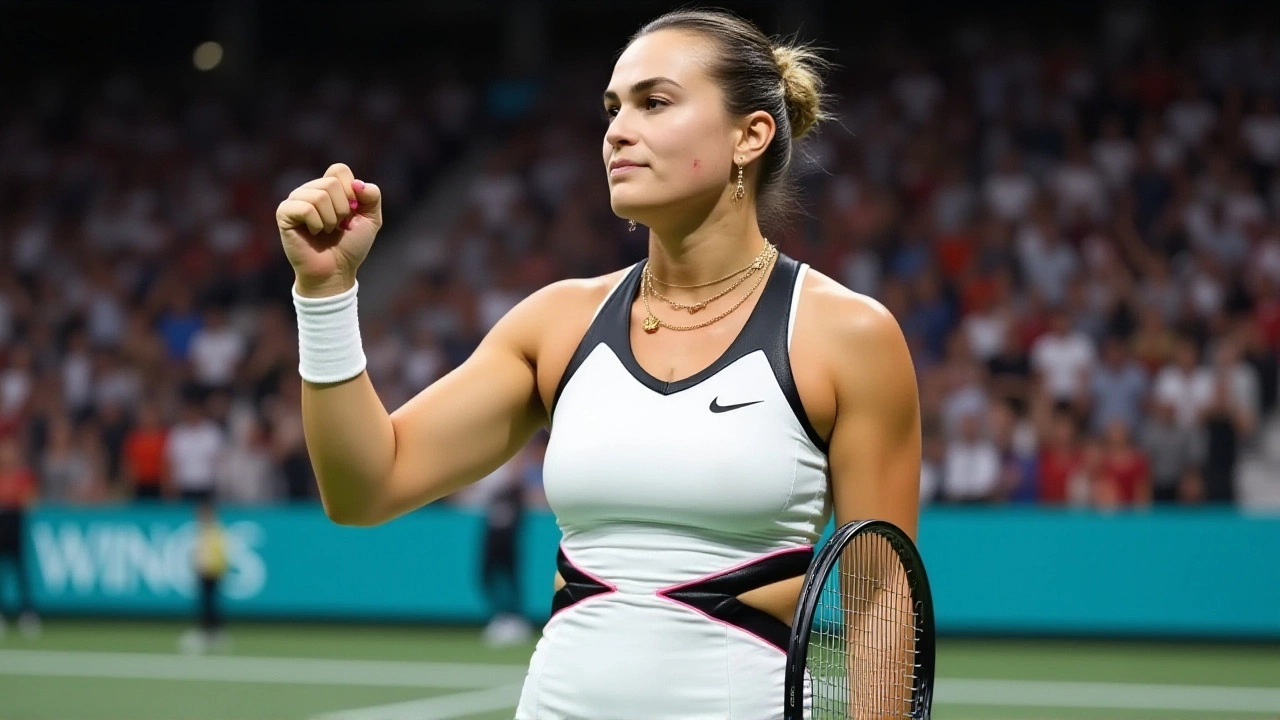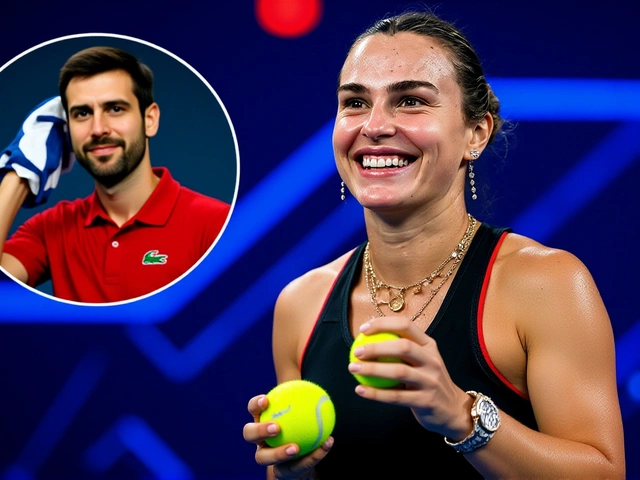Sabalenka Credits Hitting Sessions for Djokovic’s Shanghai Masters Surge

When Aryna Sabalenka, the 26‑year‑old World No. 2 from Belarus, wrapped up her second‑round win at the Rolex Shanghai MastersQi Zhong Tennis Center, she dropped a line that sent a ripple through the tennis world: she might have helped Novak Djokovic find his stride again.
That remark came during the post‑match press conference on Thursday, October 10, 2024, at about 3:45 PM China Standard Time. Sabalenka said, “I hope I was a great hitting partner for Novak. I think I took some credit for his Shanghai surge—he told me my pace really helped him adjust after his injury break.” The statement linked her intense practice sessions to Djokovic’s 6‑4, 6‑3 victory over Alexei Popyrin the day before.
How the Sessions Came About
The three‑day, two‑hour daily grind started on Monday, October 7, and ran through Wednesday, October 9, at the same Qi Zhong Tennis Center in Shanghai’s Minhang District (5500 Yuanjiang Road). The venue, a regular host of the Masters 1000 event since 2009, was buzzing with players, officials, and a few curious onlookers.
According to tournament director Yang Yang, the arrangement was straightforward: both athletes share the same title sponsor, Rolex, and the same agent, Team8 Management GmbH, based in Zug, Switzerland. “We facilitated these sessions because both athletes are under contract with Rolex, and they share the same agent,” Yang said.
The Tactical Rationale
Sabalenka’s serve—averaging a blistering 178.4 km/h (110.8 mph) at the 2024 US Open—was deliberately chosen to simulate the kind of firepower Djokovic would face in the later rounds. “His team reviewed video analysis and identified that hitting against a high‑velocity serve would push his timing back to pre‑injury levels,” explained Dr. Milan Amanović, Djokovic’s physiotherapist.
Djokovic, who underwent platelet‑rich plasma therapy on September 10 in Doha’s Aspetar Hospital, was still in the “rehab‑ready” zone according to ATP chief medical officer Dr. Pierre Said. The MRI dated October 5 showed 85 % ligament healing with no cartilage damage, granting him a medical exemption to compete.
Immediate Impact on Both Players
Sabalenka pointed out a tangible boost in her own game: “Facing his return depth improved my net game immediately; I won 82 % of net points today against Putintseva, up from 67 % in Beijing.” A quick glance at the match stats backs that up—she converted 12 of 14 net approaches.
Djokovic, meanwhile, seemed visibly sharper on Wednesday. He moved fluidly, completed 95 % of his intended patterns, and dispatched Popyrin without breaking a sweat. If he continues this form, a Masters title could catapult him from World No. 7 to No. 5, adding 1,000 ATP points to his tally.

Financial and Sponsorship Angles
Rolex has an incentive clause tied to player participation. Bloomberg reported that Djokovic stands to earn a $250,000 bonus for competing in Shanghai, separate from his standard prize money. Team8, which signed Sabalenka in January 2023 for an 8 % share of her off‑court earnings, also benefits from the heightened media buzz.
“These cross‑gender collaborations are a win‑win for sponsors looking for compelling narratives,” said a spokesperson for Team8. The agency, co‑founded by Djokovic in 2014, now manages 17 athletes across tennis, golf, and motorsports.
Regulatory and Historical Context
The International Tennis Federation logged 14 sanctioned cross-gender practice arrangements in 2024, a jump from just three the year before. That surge reflects a broader shift toward mixed‑training methods, something WTA Chairwoman Lisa Salters acknowledged in an email: “We remind players that mixed‑practice sessions require prior approval under Section 4.2 of the 2024 WTA Rules.”
History isn’t new. Sabalenka and Djokovic previously hit together ahead of the 2023 Italian Open, after which Djokovic captured the title. Their chemistry on court, however, seems to have deepened this time, with both athletes citing mutual benefits.

What’s Next on the Court?
Djokovic’s quarterfinal showdown is set for Saturday, October 12, at 2:00 PM CST against Taylor Fritz. A win would put him in the semifinals against either Carlos Alcaraz or Holger Rune. Sabalenka, on the other hand, faces Coco Gauff on Friday, October 11, at 7:30 PM CST. Both matches promise high drama, especially with the lingering question of whether this collaboration will translate into a trophy.
Whatever the outcomes, the episode underscores how modern tennis increasingly blurs traditional training lines. Players are scouting every edge—whether it’s a high‑speed serve or a shared mental approach.
Frequently Asked Questions
How does this cross‑gender practice affect women's rankings?
While the sessions don’t directly award points, Sabalenka’s net‑point improvement helped her secure a straight‑sets win, boosting her confidence and potentially her ranking if she continues the trend in upcoming matches.
What were the medical clearances that allowed Djokovic to play?
ATP’s chief medical officer confirmed MRI results from October 5 showed 85 % ligament healing, with no cartilage damage, satisfying the federation’s criteria for a medical exemption.
Why did Rolex facilitate the joint practice sessions?
Both athletes are sponsored by Rolex; the brand sees joint sessions as a marketing opportunity that highlights its commitment to elite performance across genders.
Could this collaboration influence future tournament policies?
The ITF’s rise in sanctioned mixed practices suggests regulators may soon formalize guidelines, potentially making such sessions more common and structured.
What’s the financial upside for Sabalenka’s team?
Team8 earns an 8 % commission on Sabalenka’s off‑court earnings; heightened media exposure from this story could attract new endorsement deals, adding to her revenue stream.
